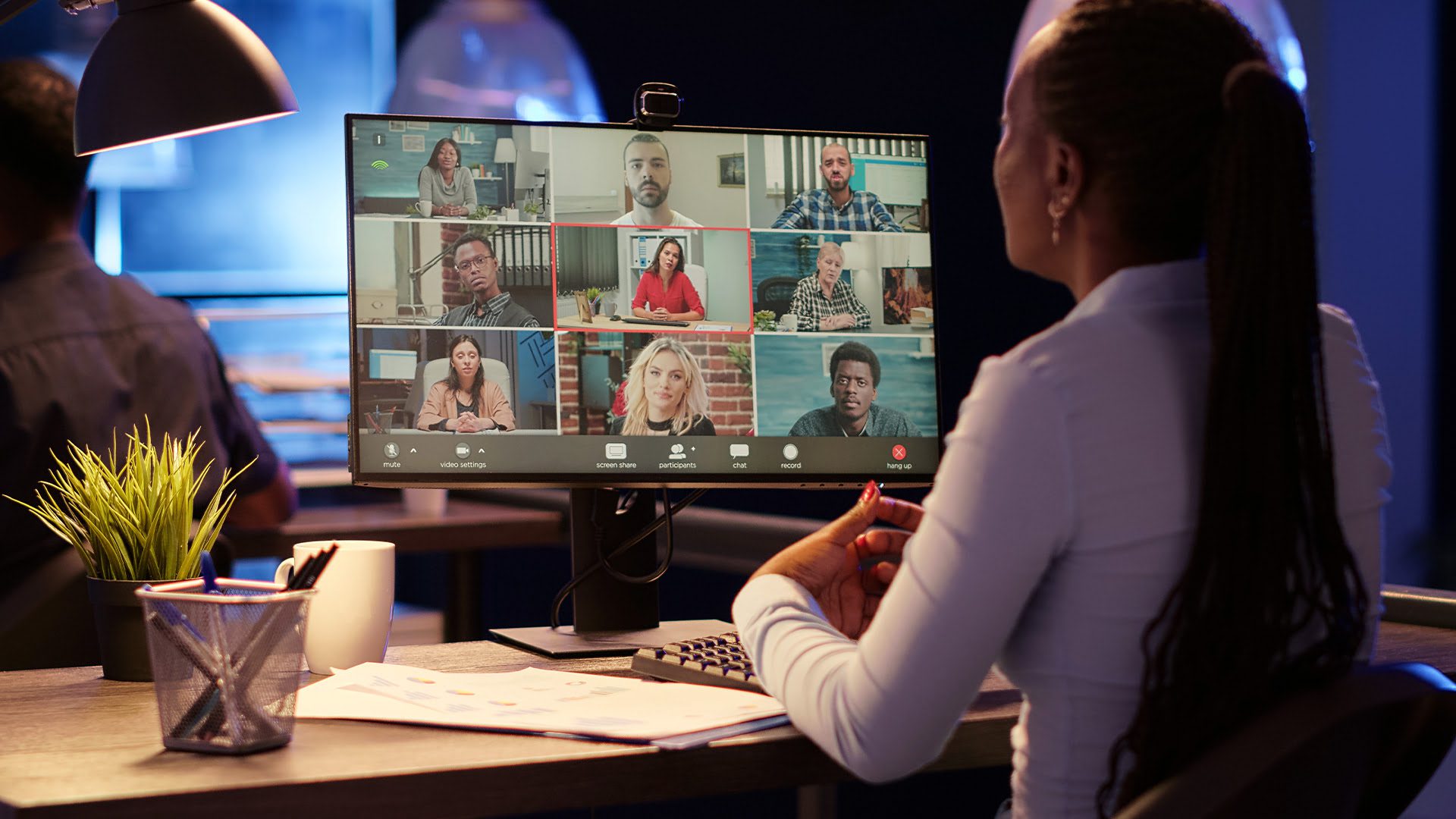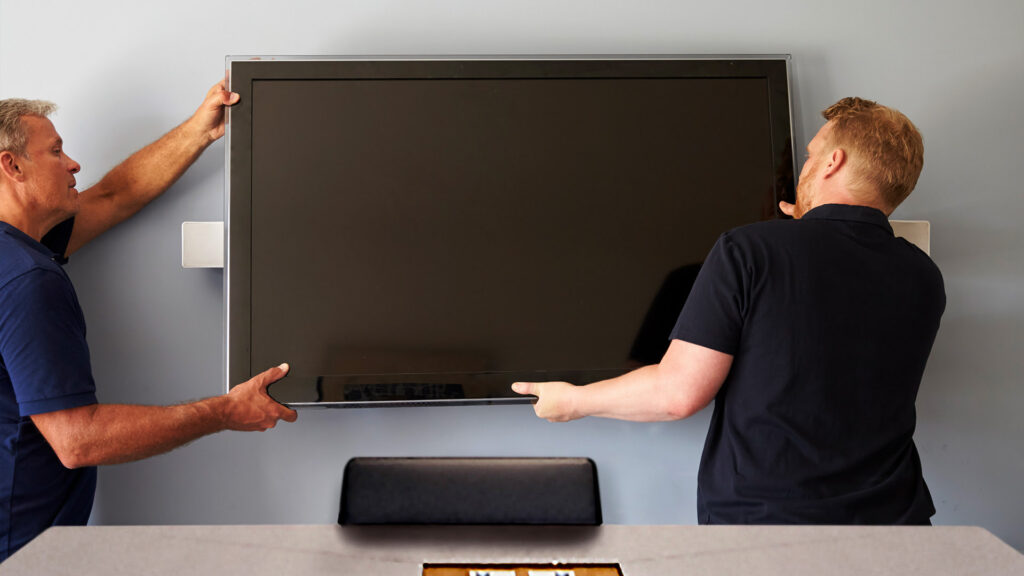Summary:
- Theoretically, calculating ROI for a new video conferencing system is straightforward: ROI = (Total Benefits – Total Costs)/Total Costs x 100. However, it can be challenging to determine the factors that contribute to the total benefits and total costs of this technology, and to predict them accurately for your business.
- Costs associated with video conferencing include network upgrades, device and equipment expenses, specialized hardware/software, setup fees, training, and maintenance.
- Benefits of using video conferencing technology include reduced travel expenses, increased productivity, faster decision-making, business continuity, administrative savings, efficient real estate use, and alignment with sustainability goals.
- For many businesses, the potential ROI for a new video conferencing system is significant. The money these systems can save often outweighs the initial outlay required.
- Investing in video conferencing not only offers financial advantages but also enhances your organization’s culture, promotes collaboration, and future-proofs your business as the world moves towards hybrid work. Contact ET Group to learn more about creating a custom hybrid workplace solution that can deliver these benefits cost-effectively.
Calculate the ROI For Your New Video Conferencing System
With hybrid work being embraced across many industries, high-quality video conferencing has become a must for efficient communication—but before investing in this technology, it helps to know what kind of financial returns you can expect from it.
While the costs of different video conferencing solutions vary, there’s a fairly straightforward way to estimate the ROI a new system offers before you purchase it. Below, our team at ET Group will walk you through the factors you should consider in your calculations so that you can make an informed decision about how to proceed.
Calculating ROI: A Simple Formula with a Few Tricky Variables
At its core, ROI is a percentage that represents the net gain of an investment versus its initial costs. The formula is straightforward:
ROI = (Total Benefits – Total Costs)/Total Costs x 100
The challenge lies not in the math involved, but in comprehensively and accurately assessing what factors constitute the ‘Total Benefits’ and the ‘Total Costs’. Below, we explain each of these in detail so you can fully understand the implications of investing in new video conferencing technology.
Breaking Down the Costs of Video Conferencing
An effective video conferencing system comes with a range of costs, depending on your existing infrastructure and the functionality your organization needs:
- Network Upgrades: Because it relies so heavily on real-time video and audio, conferencing is a bandwidth-hungry application—and this can require upgrades to your network. Specific upgrades might involve better broadband plans or entirely new network infrastructure.
- Endpoints: These are the physical devices your team members will access for video conferencing—as well as the accessories for those devices that make high-quality conferencing possible (like high-quality cameras, microphones, and adequate processing power for optimal performance). You may spend less here if your remote employees are using devices they own—but you’ll still need to cover the devices used in your conference rooms themselves, plus any equipment you provide to remote team members.
- Infrastructure Components: Beyond endpoints, your conference system will likely require specialized hardware or software for tasks like bridging different communication systems and ensuring secure connections.
- Installation & Configuration: Deploying your new system involves several steps, each of which can have associated fees. Costs arise from integration, customization, and rigorous testing to ensure everything runs seamlessly.
- Training Programs: Modern video conferencing tools are designed to be intuitive, but there’s still normally a learning curve. Keep some room in your budget for training, including workshops that help your team adjust to remote and hybrid work.
- Maintenance & Upgrades: Technology isn’t static. Periodic software updates, potential hardware replacements, and general troubleshooting are costs that you can expect to incur.
The Benefits of Video Conferencing Technology
Although a worthwhile video conferencing system requires an initial outlay and comes with ongoing expenses, it also brings a wealth of benefits that help offset these costs. These include:
- Reduced Travel Expenses: Physical meetings, especially international ones, come with flight tickets, hotel stays, and meal expenses. Video conferencing can drastically cut down on these, while also reducing the wear and tear of frequent travel on team members.
- Heightened Productivity: No more time or energy wasted on commuting. Video conferencing lets remote team members save hours and improve their focus, boosting their work-life balance while directly contributing to your bottom line.
- Quicker Decisions: Faster and more frequent communication lets you resolve challenges in less time, propelling projects to completion without unnecessary delays.
- Business Continuity: If unforeseen disruptions occur (including natural disasters, pandemics, or geopolitical tension), video conferencing can keep the wheels of your organization turning.
- Lower Admin Costs: Less travel also means less administrative overhead related to processing travel claims, reimbursements, and allowances.
- Better Use of Real Estate: When more meetings are held virtually, you can repurpose or even reduce physical meeting spaces, which provides significant savings in real estate costs.
- Corporate Responsibility: As businesses globally strive for sustainability, reduced travel translates to a reduced carbon footprint, aligning with green initiatives and potentially helping you qualify for tax incentives.
Using the ROI Formula in Context
Given the costs and benefits outlined, let’s imagine how these could feed into the ROI formula above:
To provide some perspective, let’s use a hypothetical medium-sized company as an example. This company has:
- 500 employees
- 20% of employees travel for business reasons
- An average employee salary of $60,000 per year
- Real estate costs of $200 per square foot for meeting spaces
Example Costs
- Network Upgrades: Suppose an upgrade to the organization’s existing infrastructure costs $20,000.
- Endpoints: Investing in high-quality cameras, microphones, and devices for various departments might reasonably cost $30,000.
- Infrastructure Components: Say that integrating additional hardware or software solutions costs $15,000.
- Installation & Configuration: We’ll allocate $10,000 for setting up, customization, and thorough testing.
- Training Programs: Designing and executing training sessions across the organization might cost around $10,000.
- Maintenance & Upgrades: Setting aside a budget for potential replacements, software updates, and general upkeep, let’s allocate $15,000 for the year.
Total Costs = $20,000 + $30,000 + $15,000 + $10,000 + $10,000 + $15,000
Total Costs = $100,000
Benefits
- Reduced Travel Expenses: If 20% of 500 employees (that’s 100 employees) travel and on average cost the company $2,000 per trip (including airfare, accommodation, meals, etc.) and they each make five trips annually, that’s $1,000,000 annually. If video conferencing can eliminate half of these trips, the savings would be $500,000.
- Heightened Productivity: If we save 2 hours per week for each of the 500 employees, that’s 1,000 hours weekly. Assuming a 50-week work year (excluding holidays), that’s 50,000 hours saved—or $1,442,307 when you factor in their salary. If we assume that the value of the saved time is only 10% of its monetary worth (since not all saved time translates directly into productive output), the total benefit would be $144,231.
- Enhanced Decision-making: If we assume that faster decision-making can accelerate the lifecycle of certain projects by 10%, and if the company handles $1,000,000 worth of these projects annually, that’s a potential early revenue realization of $100,000.
- Business Continuity: For a company with a total revenue of, say, $50 million annually, even a 0.1% loss avoidance equates to $50,000.
- Diminished Admin Costs: A reduction of 30% in admin overhead from lesser travel translates to savings of $30,000.
- Optimized Real Estate Usage: If the company reduces its meeting spaces by 200 sq. ft due to more virtual meetings, at a rate of $200/sq.ft, they save $40,000.
- Corporate Responsibility: While the tangible monetary benefit from green initiatives might be indirect, let’s assign a value of $30,000 (based on reasonable estimates for increased business due to positive brand image, potential tax incentives, and so forth).
Benefits Tally = $100,000 + $100,000 + $50,000 + $50,000 + $30,000 + $40,000 + $30,000
Total Benefits = $894,231
Now, applying our formula:
ROI = ($894,231 – $100,000) / $100,000 x 100 = 794.23
ROI= 794.23%
Keep in mind that these numbers are entirely hypothetical, and intended to highlight the potential long-term returns video conferencing technology can provide. For a more detailed idea of how your specific organization could benefit from implementing this kind of system, we recommend reaching out to our technology consultants for a detailed plan and a personalized estimate.
Video Conferencing: A Critical Long-Term Investment
Investing in a video conferencing system has the potential to provide significant financial benefits in the long run, but it’s also an excellent way to improve your organization’s culture. The right technology can help you streamline your operation, improve collaboration among your team members, and move with more agility when faced with critical decisions.
As an increasing number of businesses move towards hybrid and remote work, investing in a video conferencing system is also an important part of future-proofing your organization. Contact ET Group to find out how we can help you stay ahead of the curve with a custom hybrid workplace solution that helps your people do their best work and provides a measurable return on investment over the course of its lifespan.
Frequently Asked Questions about Video Conferencing ROI
How often should I reassess the ROI offered by my video conferencing system?
Given the pace of technological evolution, it’s advisable to reassess the ROI of your video conferencing system every 2-3 years. This ensures you’re leveraging the latest features and helps identify areas where newer solutions might provide better value. Regular reviews will ensure your system remains cost-effective and meets the evolving needs of your organization.
Is negative ROI for video conferencing systems possible (& how can I avoid it)?
Before investing in any new technology for your business, it’s important to make sure the costs outweigh the benefits to avoid negative ROI. Factors that could contribute to negative ROI for video conferencing systems include:
- Overinvesting in unnecessary equipment
- Lack of employee adoption
- Frequent technical issues
- An inadequate network infrastructure that hampers the system’s performance
To avoid these issues, it’s vital to plan and implement your new system with experienced professionals. Our team at ET Group provides consulting and training for your team to maximize the effectiveness of your new system and eliminate these risks.
Is employee training for new video conferencing systems always necessary?
While modern video conferencing tools are designed for ease of use, it’s essential to recognize that comfort with technology can vary among employees. Training ensures that all team members can use your system to its fullest potential.
Even if your team members are familiar with such tools, the specific features or integrations of your new system may require brief training sessions. The goal is to ensure seamless communication and collaboration without technical hiccups so that you can enjoy the best possible value from your investment.
What costs and benefits are most relevant for my company when calculating ROI?
Each organization has unique needs. While we’ve offered a general breakdown of potential costs and benefits above, it’s crucial to consider your company’s unique factors, such as:
- Size
- Current infrastructure
- Frequency of travel
- Team dynamics
Consulting with our technology specialists at ET Group is the easiest way to arrive at a more specific estimate of the ROI you can expect from upgrading to a new video conferencing system.
Stay connected with us:
Follow ET Group on LinkedIn
Subscribe to ET Group’s YouTube Channel










